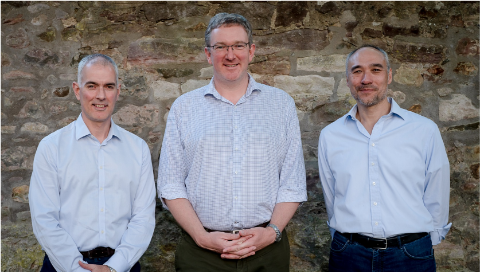Blackford Analysis
During the 2022 Society for Imaging Informatics in Medicine (SIIM) meeting, Blackford’s Founder and CEO Ben Panter, PhD participated in the Ask Industry Panel Discussion, moderated by Dr Katherine P. Andriole, PhD, Director of Imaging Informatics at Brigham and Women’s Hospital.
The panel was asked 8 key AI adoption questions - we’ve condensed Ben’s insight and answers to these questions below to help provide you with an insightful overview of Ben's perspectives: Q: We have stand-alone AI-based applications, but what are some of the ways solutions can be integrated, and into which systems? A: It is very rare that we see a single point of integration with AI applications because they need to be integrated throughout the workflow. Most facilities have different providers for worklist, viewing, and reporting, but AI is only useful if there’s seamless integration with all those different vendor’s products. PACS is certainly a key element of AI integration, but it’s also critical to integrate beyond the walls of the radiology department so we can demonstrate the downstream clinical value and upstream quality improvement that unlocks the true value of AI. Q: What are the pluses and minuses of different approaches to integration? A: Procurement through a single channel certainly makes the paperwork easier, but you still need to have a full range of solutions available to ensure you have the right solutions to meet your needs. Various vendors claim best-in-class applications, but our experience with deploying more 3 rd party AI solutions than anyone else, is that different facilities have different clinical and business drivers, different patient demographics and different radiologists and referrers. So, a best-in-class solution that may work for one institution can completely miss the mark for another. Q: What is the role of the cloud in clinical implementation? What are the concerns? A: The cloud certainly has a role in the clinical implementation of AI, but how much of a role depends on the preferences of the institution. Flexibility is the key. Today, the vast majority of infrastructure is on-premises. But soon, we’ll see a lot of infrastructure transferring to the cloud. When it’s time to transfer from on-premises to the cloud, the ease of facilitating the transfer should be a concern. That’s why it’s important to find a partner who has demonstrated delivery of both on-premises and cloud solutions, with the ability to enable a smooth shift between them without any forklift upgrades. Q: Who pays for AI? How do we get sustainable ROI from AI in healthcare? A: There are four routes for AI to be financially successful and sustainable.- One route is for AI that has a strong enough value proposition that it can deliver value without any external reimbursement. For example, stroke care coordination, modality throughput enhancement, or image registration.
- Another route is for AI that becomes the standard of care. I’m not sure if we should refer to mammography Computer Aided Detection as AI, but the use of CAD is included in some screening reimbursement codes and this is a potential route for some AI applications.
- A third route is for AI that provides real clinical value to patients but doesn’t fit in the current paradigm. Examples of this are Heartflow and Perspectum. This route requires reimbursement, but that takes time.
- The fourth route is where visionary providers and clinicians adopt AI and show the value. Low Dose CT lung cancer screening programs are an example. This route requires linkage with downstream disciplines – in this case pulmonology and oncology. It takes effort, but it can happen.











